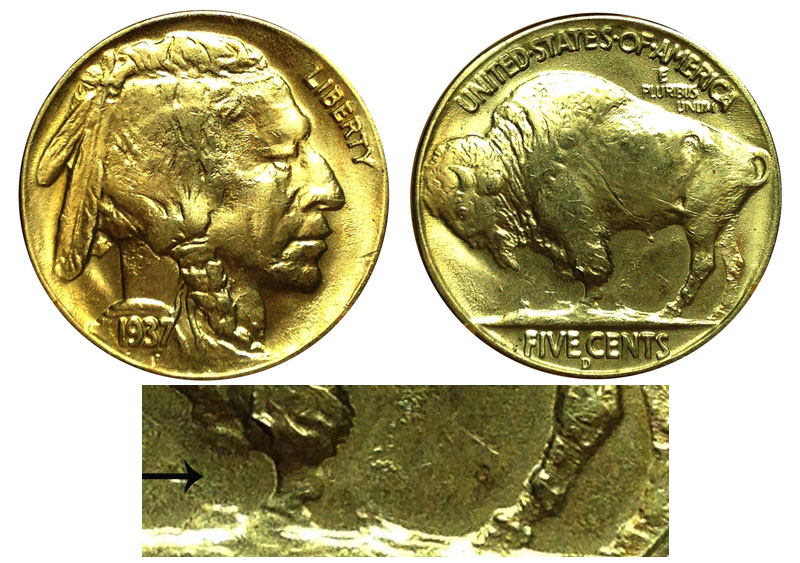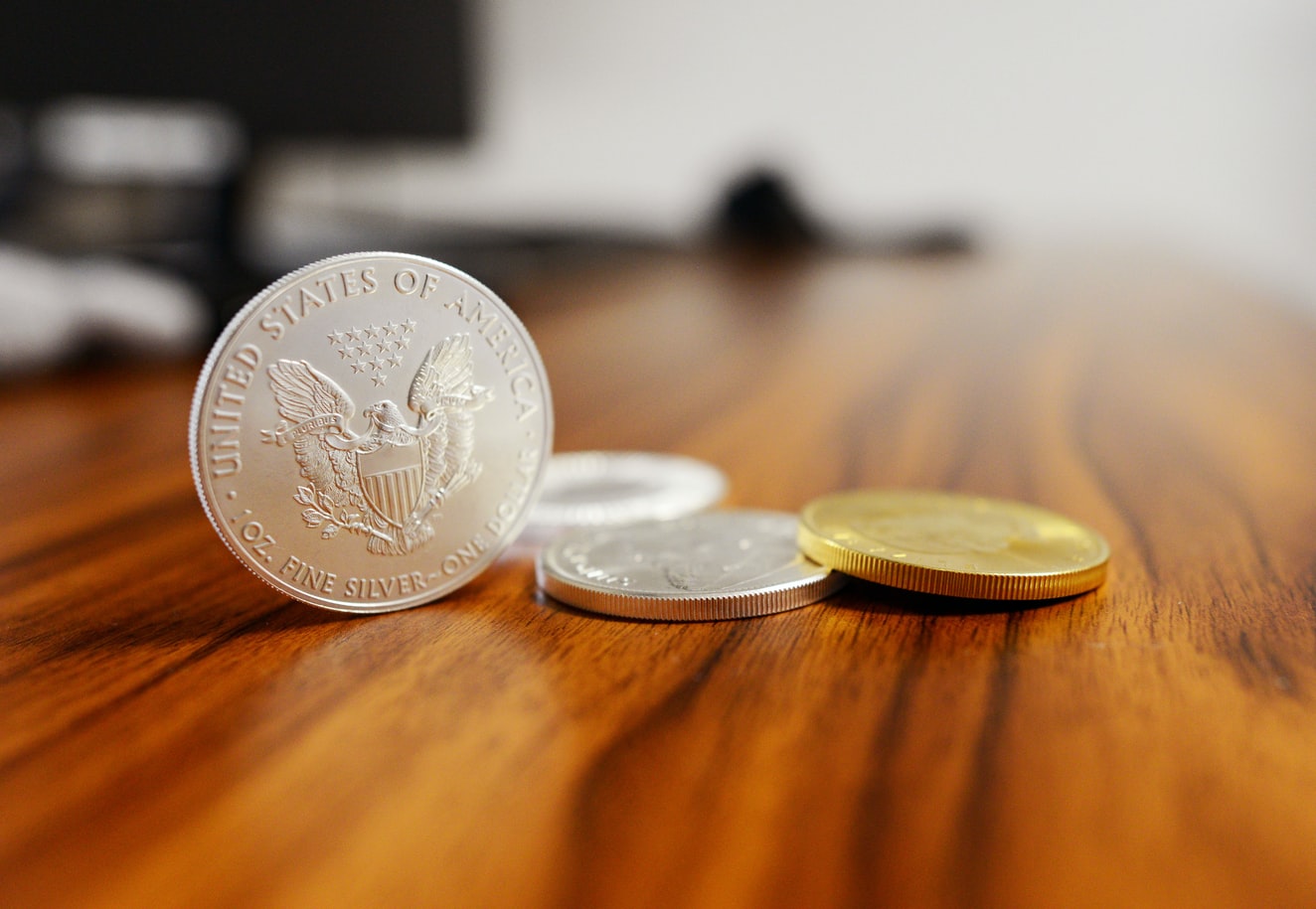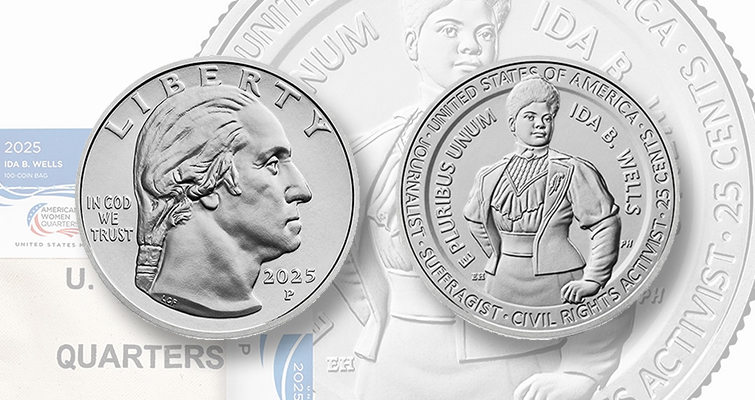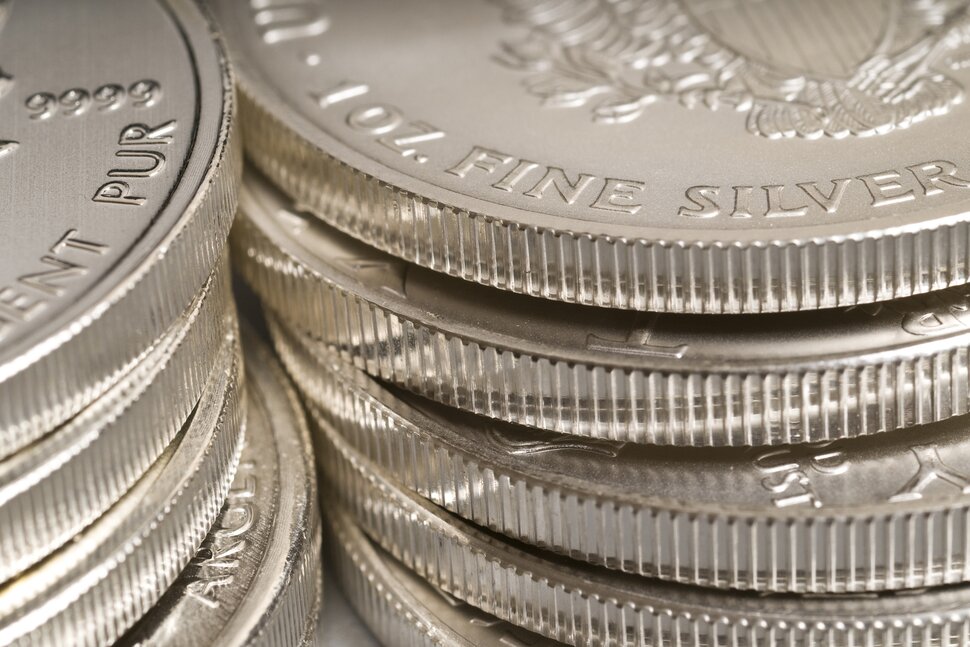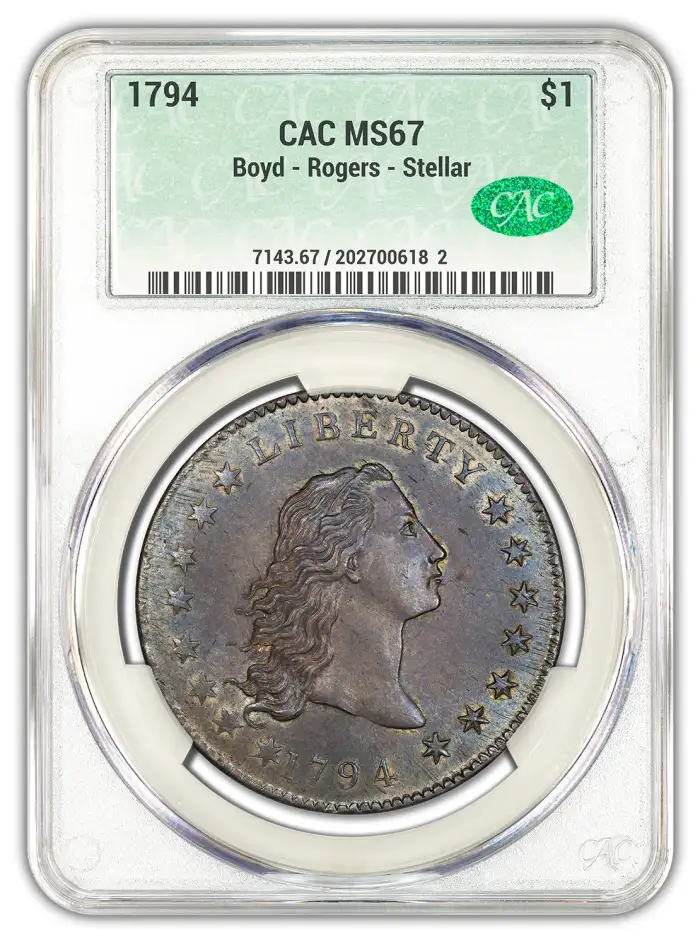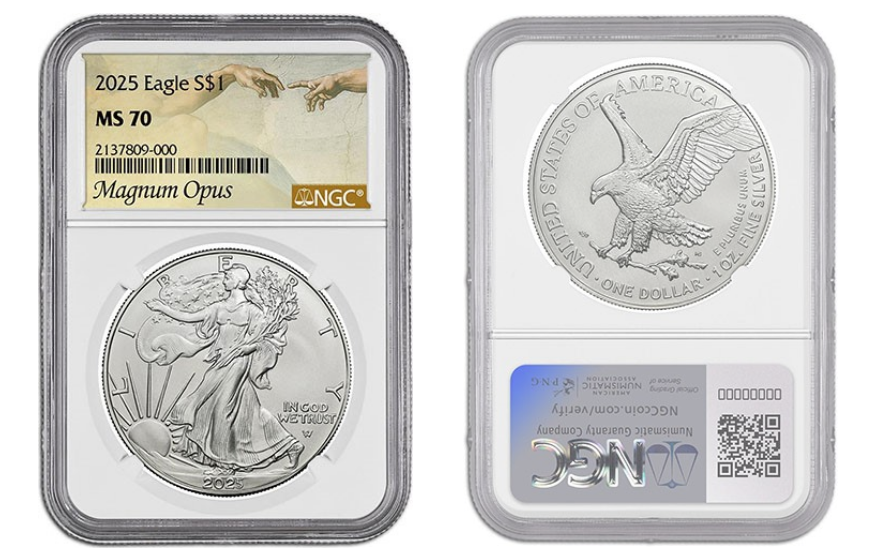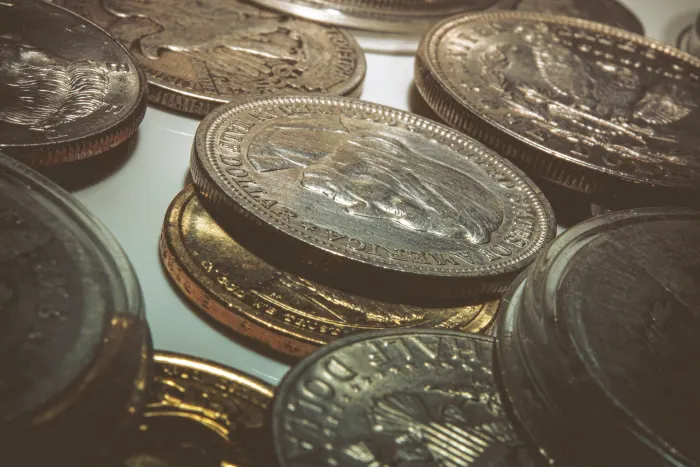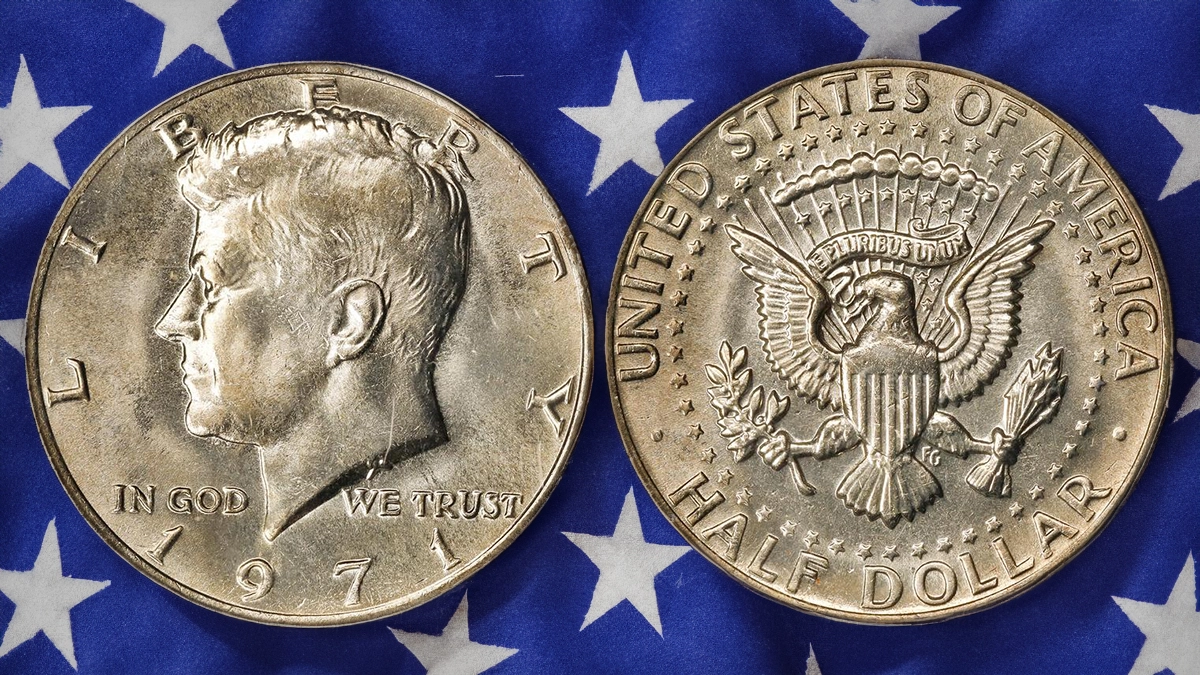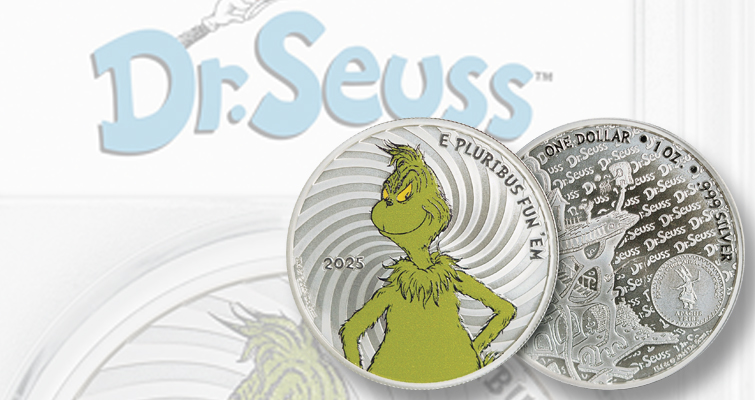Top 20 Rare Coins Wanted By Collectors
Multi-million dollar coins get the headlines when they sell at major auctions, but there are many historically important coins that are attainable by serious numismatists who aren’t billionaires.
This list is taken from several areas of numismatics to show the breadth and scope of US coin collecting. Our overview covers the length and breadth of American numismatics, from the Colonial era to the 20th century.
While we’ve generally used the $1 million mark as the cutoff, many of these coins still fetch eye-watering prices (at least to us!). Setting aside “impossible dreams” like the 1933 Double Eagle, here are 20 rare coins that serious collectors want.
All images courtesy of USA CoinBook unless otherwise noted.
1. 1909-S VDB Lincoln Cent
Auction Records: $6,600 BN; $19,200 RB; $117,500 RD
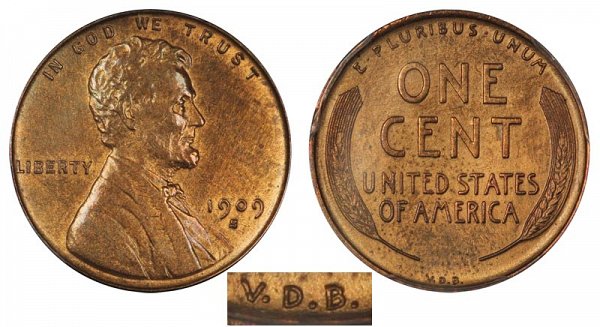
1909-S VDB Lincoln Wheat cent
The 1909-S VDB Lincoln cent is probably the most famous US coin among the general public. It easily makes our list of 20 rare coins that serious collectors want.
The Lincoln cent was introduced in 1909 to mark the 100th anniversary of Abraham Lincoln’s birth. Victor David Brenner was chosen to design the coin. Following the lead of foreign coin artists, he added his name in small letters below the wheat sheaves on the reverse of the cent. Chief Engraver of the Mint Charles Barber replaced Brenner’s name with the initials VDB.
Certain newspapers began agitating over Brenner’s initials, claiming even this was an illegal attempt by the artist to get free advertising on the back of US currency. To prevent delays and make the controversy go away, the Mint buffed out Brenner’s initials on the dies and resumed production.
The Philadelphia Mint produced just shy of 28 million 1909 VDB Lincoln Wheat cents before the change. But only 484,000 1909-S Lincoln cents using the original reverse with the VDB initials were struck by the San Francisco Mint.
Less than 60,000 1909-S VDB Lincoln Wheat cents are believed to survive.
CDN Greysheet gives a price range for 1909-S VDB cents in Brown (BN) of $715 in Good G4 to $4,750 in Mint State MS66. The CDN price range for the same coin in Red Brown (RB) runs from $2,060 for MS61 to $6,880 for MS66. The ultra-rare 1909-S VDB cent in Red (RD) goes for $7,190 in MS65 and $13,700 in MS66.
2. 1943 Lincoln Cent on Bronze Planchet
Auction Record: $372,000
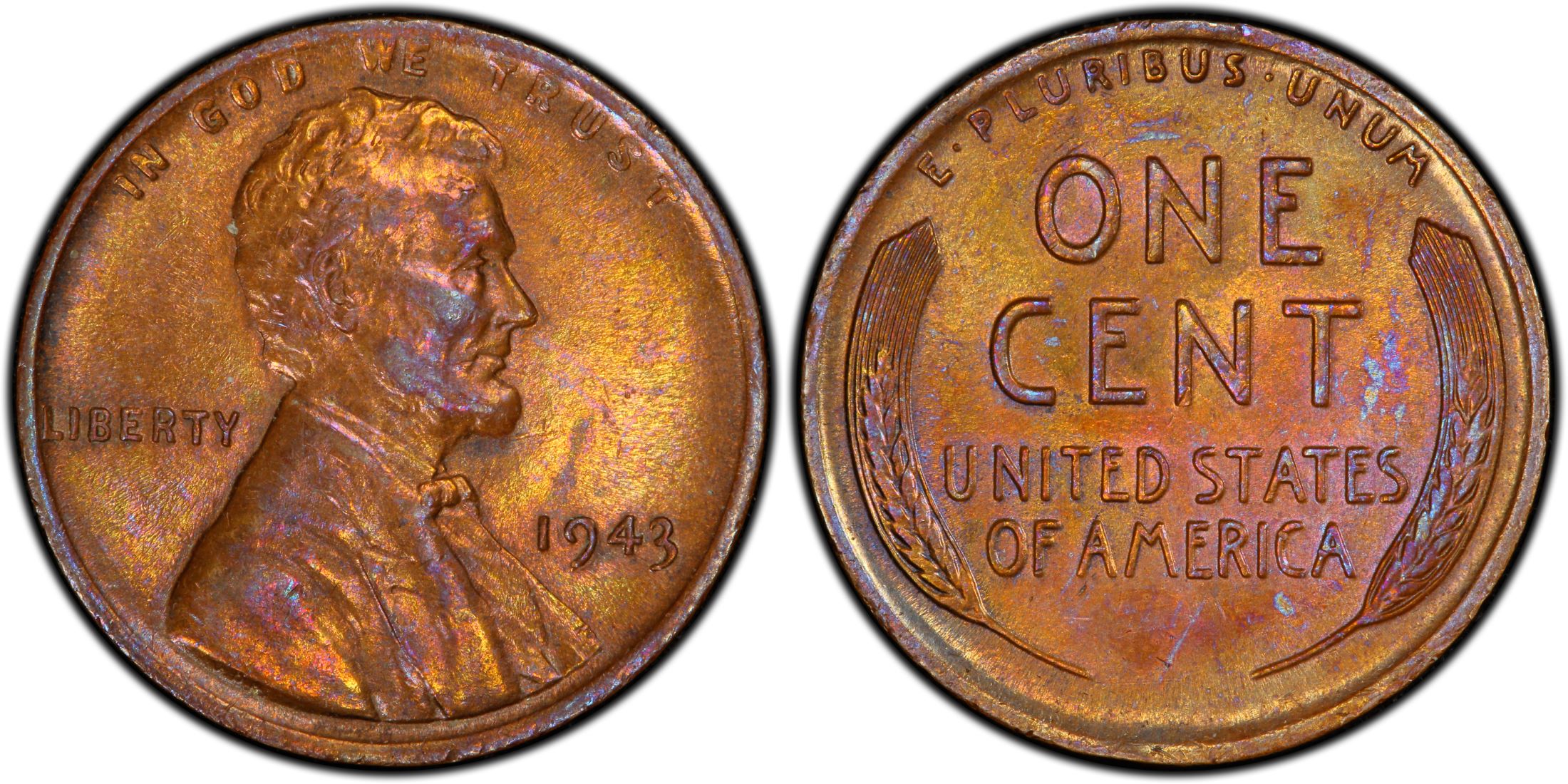
1943 copper Lincoln penny
Here is one of the most famous error coins of all time. The 1943 Lincoln Wheat cents struck on bronze planchets create excitement whenever they appear at auction. Due to wartime shortages of copper in 1943, the US Mint was forced to use zinc-coated steel blanks to make one-cent coins.
From the more than 1.1 billion Wheat cents made that year, approximately 25 were struck on bronze blanks left over from 1942. It is thought that these coin blanks were lodged in nooks and crannies of large bins at the Mint. From there they worked their way loose during the year as millions of steel blanks were dumped in the bins.
Current population estimates are 15 to 20 1943 bronze cents that were struck in Philadelphia and five in San Francisco. There is only a single 1943-D bronze cent known. The public was galvanized into searching for these extremely rare coins by newspaper accounts, including the (false) rumor that Henry Ford would give a new car to anyone who could present him with a 1943 bronze cent.
CDN Greysheet does not have a price chart for any 1943 bronze Wheat cent, due to their extreme rarity. Other sources quote prices in the six figures.
3. 1937-D 3-Legged Buffalo Nickel
Auction Record: $99,875

1937-D 3 legged Buffalo nickel
The 1937-D 3-Legged Buffalo nickel is another rare coin that is famous among the general public. As a result of some overzealous polishing on a damaged reverse die at the Denver Mint, the right front leg of the bison was completely removed from the surface of the die.
The popularity of the 3-Legged Buffalo nickel means that counterfeits and altered coins abound. There are three places to look when determining if a 1937-D Buffalo nickel is a real 3-legged error coin:
- The hoof of the missing leg should be present.
- The right rear leg should look “moth-eaten,” as numismatist Ron Guth describes it.
- A damaged streak under the buffalo makes it look as if he is relieving himself.
The 1937-D 3-Legged Buffalo nickel sees robust demand in all grades, yet is more affordable than other coins on our list. CDN Greysheet prices run from $364 in Almost Good AG3 to $39,000 in MS66.
4. 1893-S Morgan Dollar
Auction Record: $2,086,875
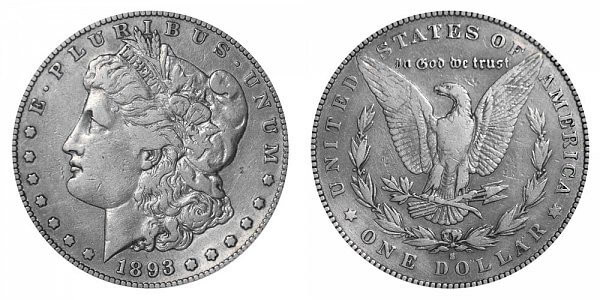
1893-S Morgan silver dollar
The 1893-S Morgan dollar is the absolute key date of circulation strike Morgans. A tiny 100,000 mintage and the popularity of “hard money” in the Western US means that perhaps one in ten have survived to the present day. Most are heavily worn.
Because so few were put aside, Mint State 1893-S Morgan dollars are by far the rarest coin in Morgan dollar history, aside from the proof-only 1895. Collectors able to get an 1893-S in any condition should feel fortunate.
CDN Greysheet prices for the 1893-S Morgan run from $2,250 in AG3 to $1,020,000 in MS66. The sole coin graded higher is an MS67 that sold in 2021 for $2 million. It’s previous appearance was ten years earlier, when it sold for “only” $546,250.
5. 1895 Proof Morgan Dollar
Auction Record: $150,000
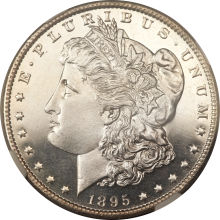
1895-O Morgan dollar proof
The 1895 proof Morgan dollar is often called the “King of Morgan Dollars.” Although Mint records indicate that a mere 12,000 Morgan dollars were struck in 1895, none have ever been found. This has left collectors with only the 880 proof 1895 Morgans struck that year to fill that spot in their collections.
Theories on the missing 12,000 business strike 1895 Morgan dollars range from the entry being an inventory adjustment to 1894 Morgan dollar production, to all twelve sacks of 1895 Morgans being melted under the Pittman Act of 1918.
With more than half the 880-coin mintage surviving, the 1895 proof Morgan is not as rare as many other famous mintages. However it never fails to garner attention when it comes up for auction.
CDN Greysheet quotes the 1895 proof Morgan dollar at $31,200 in G6 to $168,000 in MS68.
6. 1921 High Relief Peace Dollar
Auction Record: $132,000
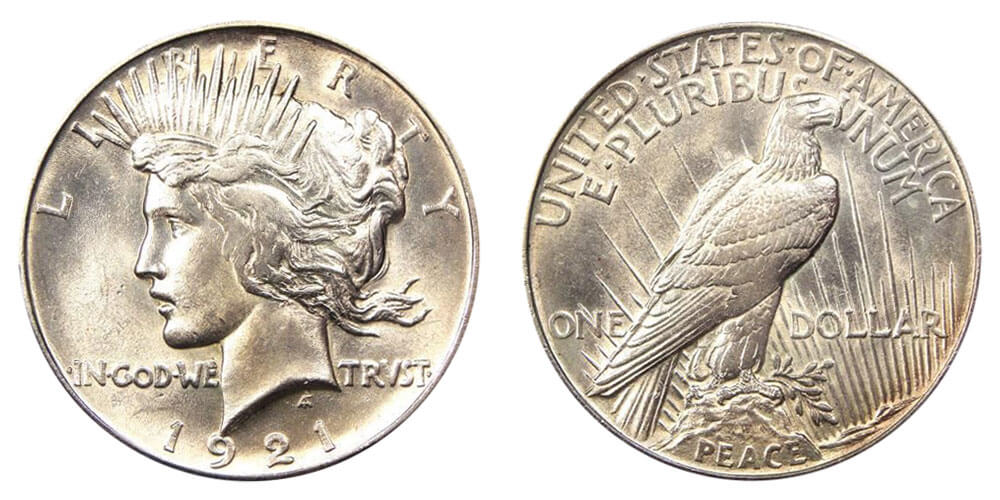
1921 High Relief Peace silver dollar
The 1921 High Relief Peace dollar is another historically important rare coin. Even though production didn’t begin until December 28th, a little more than 1 million silver dollars were struck in Philadelphia by the end of the year.
Like many other new coin designs at the turn of the 20th century, the initial Peace dollar had very high relief features. This led to there not being enough silver in the blank to completely fill the highest point in the design when struck under normal pressure. For this reason, fully struck Mint State coins command a premium.
CDN Greysheet lists $130 for a 1921 Peace dollar in AG3 and $115,200 for one in MS67
7. 1916 Type 1 Standing Liberty Quarter
Auction Record: $48,300

1916 Standing Liberty quarter
A low mintage and surprise release combined to make the 1916 Standing Liberty quarter another big rarity in 20th-century US numismatics. A protracted design process meant that the first 1916 Standing Liberty quarters weren’t struck until December 16th. Only 52,000 were made. They weren’t released until the next January when they entered circulation mixed in with 1917-dated coins.
The lack of a big formal announcement led the public to believe at first that the 1917s were the first year of issue. Coin collectors knew about the 1916-dated Standing Liberty quarter, but finding one of the 52,000 that was mixed in with all the 1917s was a classic needle in a haystack problem. This has led to even fewer Mint State examples than might be expected from the tiny mintage numbers.
The initial Type 1 Standing Liberty quarter portrayed Liberty with an exposed right breast, in the French style. This of course triggered an uproar in the American press. The US Mint took the expedient measure of converting the dies to show Liberty with a chainmail shirt, instead of spending the time it would require to make completely new hubs with a different dress design.
The problem of details on the obverse quickly wearing away only made finding high grade 1916s lurking in circulation that much worse.
CDN Greysheet prices for the 1916 Standing Liberty quarter range from $3,120 in AG3 to $37,200 in MS66.
8. 1919-D Walking Liberty Half Dollar
Auction Record: $270,250
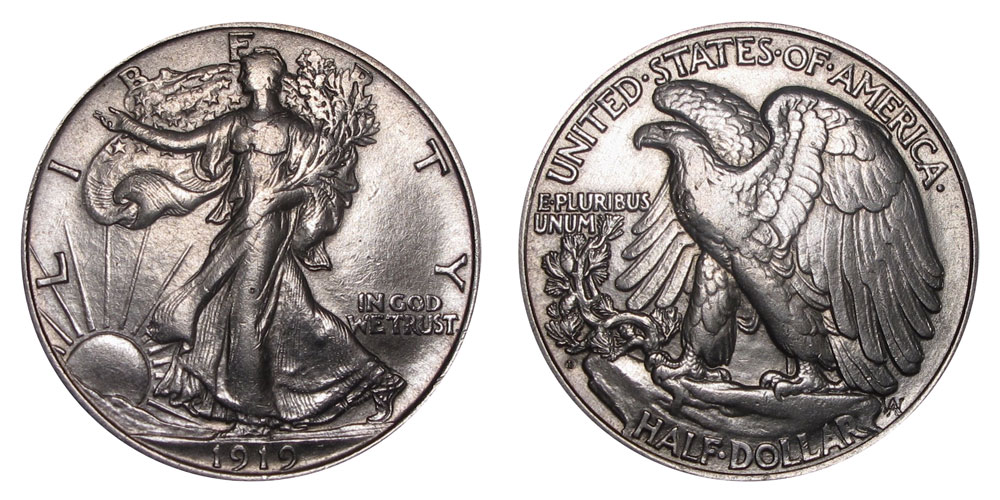
1919-D Walking Liberty half dollar
While the mintage of the 1919-D Walking Liberty half dollar is far from the lowest in the series, it remains THE conditional rarity. Most of the more than 1.1 million 1919-D Walkers went directly into circulation, which pushes the average grade for survivors down to VF35. The strike is almost always weak in the center, especially on the highest points like Liberty’s left hand.
This means finding a Mint State 1919-D is far more difficult than any other Walking Liberty mintage. It can be years between appearances of a Gem uncirculated 1919-D Walking Liberty half at auction.
CDN Greysheet puts the 1919-D Walking Liberty half at $20 in AG3, to $144,000 in MS65. Only one single 1919-D is known in MS66.
9. 1856 Flying Eagle Cent
Auction Record: $172,500

1856 Flying Eagle cent
Another American numismatic first, the 1856 Flying Eagle cent was the first “small” cent. Technically a pattern coin, so many were made and distributed that some collectors consider it a circulation issue.
The Flying Eagle cent is credited for the birth of American coin collecting by the general public. When people learned the large cent was being discontinued, they began keeping them instead of using them.
Opinions of the actual 1856 Flying Eagle mintage range from 1,500 to 2,150 coins. An estimated 800 1856 Flying Eagle cents survive today.
CDN Greysheet quotes the 1856 Flying Eagle cent at $8,600 in Very Good VG8 to $120,000 in Mint State MS66.
10. 1916-D Mercury Dime
Auction Records: $29,000; $207,000 Full Bands
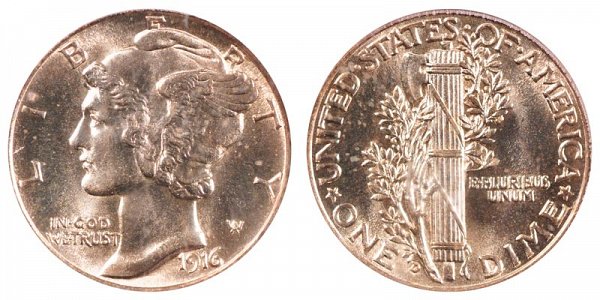
1916-D Mercury dime
The 1916-D Mercury dime is a key date in the series, both for being a first-year issue and the extremely small mintage of 264,000 coins. In comparison, more than 22 million 1916 Mercury dimes were produced in Philadelphia, and more than 10 million by the San Francisco Mint.
The number of surviving 1916-D Mercury dimes is far fewer than even this minuscule mintage might suggest. For some reason, they were not set aside like most first-year mintages. As a result, it is estimated that only around 10,000 remain.
1916-D Mercury dimes, when they are available, are usually heavily worn. Most of the surviving population grade VF or lower. Prices for attractive examples reflect the heavy demand among serious coin collectors. Competition is intense whenever an even more rare Full Bands 1916-D is seen at auction.
CDN Greysheet prices for the 1916-D Mercury dime range from $663 for an Almost Good AG2 to $30,000 for an MS65. Full Bands 1916-D Mercury dimes are priced at $12,000 for Almost Uncirculated AU55 to $48,000 in MS65.
11. 1901-S Barber Quarter
Auction Record: $550,000
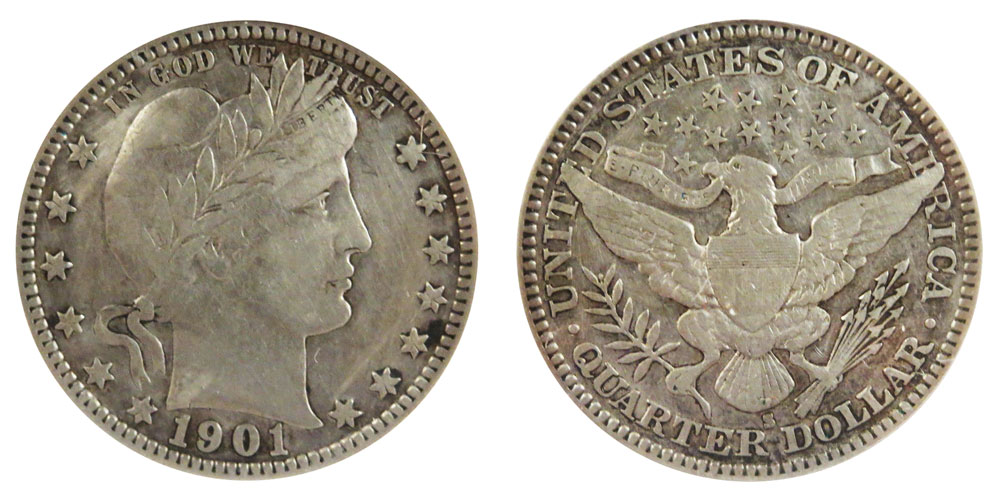
1901-S Barber quarter
One of the rarest non-error coins in US numismatics, the 1901-S Barber quarter had a mintage of only 72,644 coins. Most of the few survivors today are extremely worn to where only the outlines of the features remain. There are around 2,000 surviving coins.
The 415 NGC-graded 1901-S Barber quarters have a median grade of AG3. The 981 graded by PCGS have a median grade of G4, illustrating how incredibly rare unworn coins are among the survivors. This is a mintage where collectors who can find an example with any detail at all should feel fortunate.
CDN Greysheet prices for the 1901-S Barber quarter run from $3,500 in AG3 to $450,000 in MS68.
12. 1871-CC Seated Liberty Dime
Auction Record: $270,250
.jpg)
1871-CC Seated Liberty dime
The 1871-CC Seated Liberty Dime holds a prominent place in Carson City coin collecting. 1871 was the first year the Nevada mint produced dimes, and only a mere 20,100 were struck. They quickly disappeared into the cash-starved economy of the Southwest. Very few were saved, either accidentally or deliberately.
There are probably less than 150 survivors of the 1871-CC Seated Liberty dime today. Most were salvaged after decades of circulation, and competition is fierce when one of the few Mint State samples comes up for auction.
CDN Greysheet prices the 1871-CC Seated Liberty dime from $2,060 in AG3 to $300,000 in MS65.
13. 1871-CC Seated Liberty Quarter
Auction Record: $352,500
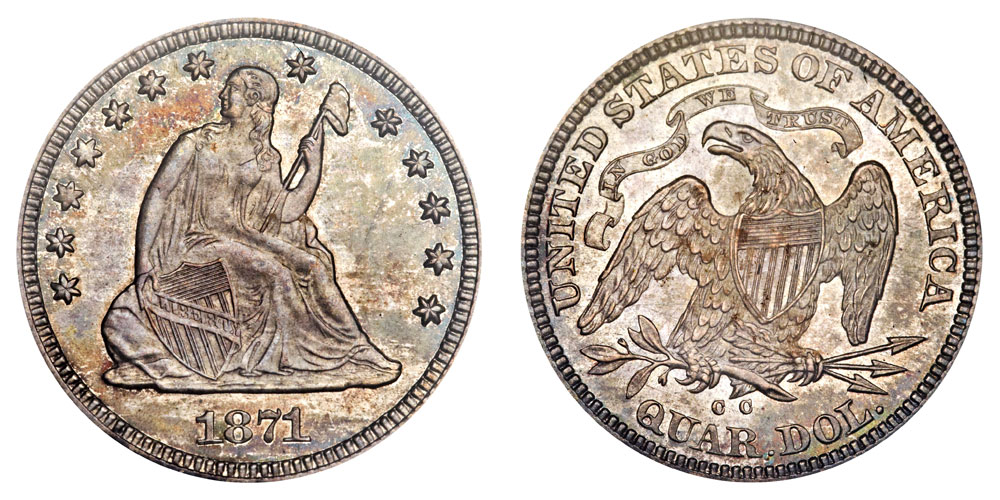
1871-CC Seated Liberty quarter
One of the rarest mintages in the history of the Carson City Mint, only 10,890 1871-CC Seated Liberty quarters were struck. These were all snapped up and put to work in the regional economy. As a result, even worn out and damaged survivors are worth thousands of dollars today. There are certainly fewer than 75 left in any condition.
CDN Greysheet shows an estimate of $5.940 for a 1871-CC Seated Liberty quarter in AG3, up to $480,000 for MS65.
14. 1838-O Capped Bust Half Dollar
Auction Record: $763,750
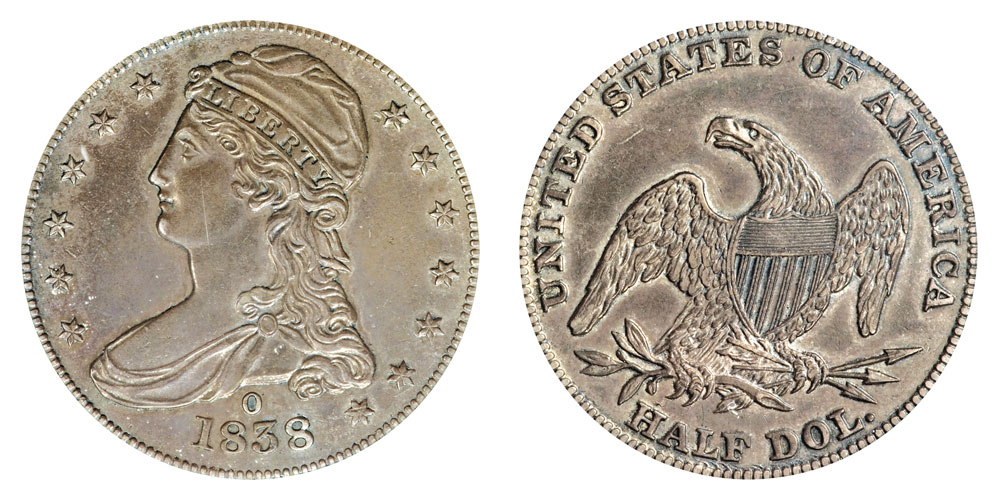
1838-O Capped Bust half dollar
The 1838-O Capped Bust half dollar is a rare and historically important coin that was never officially struck. The 20 or so coins minted were an experiment by the Superintendent of the newly-opened New Orleans Mint. He wanted to see if half dollars could be produced on the coin press intended to strike silver dollars.
Equipment failures would plague the New Orleans Mint for much of its history. Yet the first year of operations was especially fraught. The press intended to coin quarters and half dollars was out of commission for the entire year in 1838, and the Mint was under orders to strike as many half dollars as possible.
In January 1839, Mint workers attempted to make an extension that would allow the unused 1838-O half dollar dies to be used in the dollar press. (The 1839-O dies had not yet arrived from Philadelphia.) Efforts were abandoned after ten coins were struck, as the reverse die kept coming loose. Requests from well-heeled collectors for examples for their collections led to approximately ten more 1838-O being struck. None of these coins were ever entered into the official records.
The 1838-O half dollars are classified as proofs, since they were carefully made one by one while testing the jury-rigged dies, and were never intended for circulation. It is thought that half of the 20 coins struck are still extant.
CDN Greysheet lists 1838-O half dollars at $330,000 in PR40 up to $690,000 in PR64.
15. 1848 CAL Liberty Head Quarter Eagle
Auction Record: $402,500
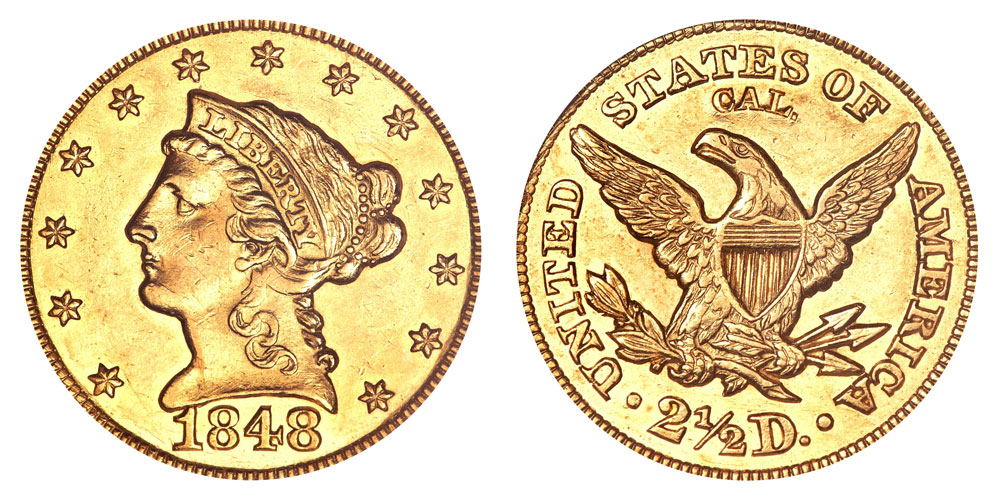
1848 “CAL.” Liberty Head gold quarter eagle
The 1848 “CAL” Liberty Head quarter eagles were the first coins made from gold from the California Gold Rush. In late 1848, Military Governor of the California Territory Colonel Richard B. Mason sent 228 ounces of the first gold mined in California to the Secretary of War in Washington DC, along with his letter describing the discovery.
The gold was forwarded to the US Mint with instructions to make Congressional Gold Medals for generals Winfield Scott and Zachary Taylor, heroes of the recently concluded Mexican-American War. The leftover gold was used to strike special 1848 gold quarter eagle coins, stamped on reverse with “CAL.” A total of 1,389 of these special quarter eagles were struck.
Many collectors consider the 1848 CAL quarter eagle the nation’s first commemorative coin. They are undeniably the first coins made from 100% California Gold Rush gold, and perhaps the only coins for which that distinction can be made.
Needless to say, 1848 CAL quarter eagles command attention whenever they appear at auction. Even improperly cleaned examples can go for tens of thousands of dollars. Because of their special nature, many were kept in uncirculated condition, but a surprising number ended up in circulation over the years.
CDN Greysheet reference prices for the 1848 CAL quarter eagle range from $3,850 in G6 to $360,000 in MS68.
16. 1933 Indian Head Gold Eagle
Auction Record: $881,250
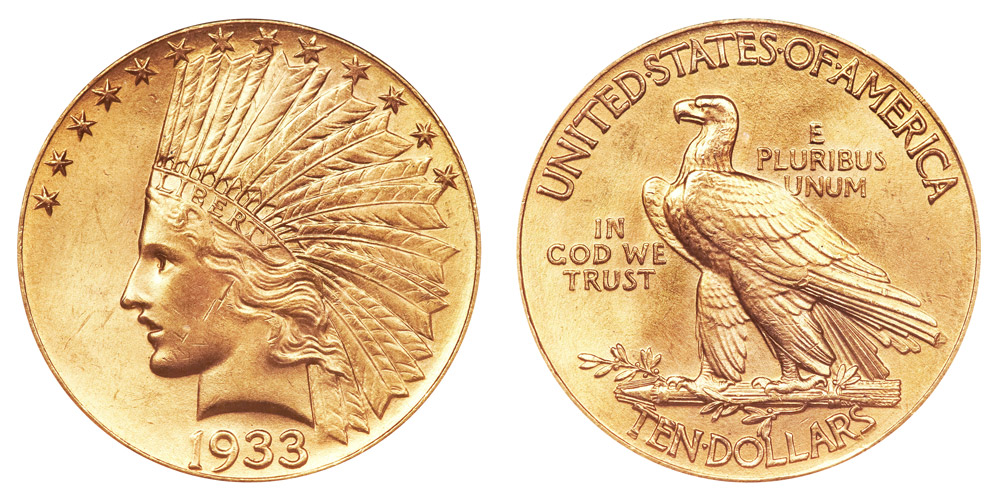
1933 Indian Head gold eagle
The 1933 Indian Head gold eagle is a famous numismatic rarity that almost didn’t survive government gold confiscation. 312,500 gold eagles were struck in January and February 1933, but only a handful made it out of the vaults at the Philadelphia Mint before the government ordered all gold coins be melted down. Unlike the famous 1933 double eagle, the 1933 gold eagle is completely legal to own.
Resourceful Mint employees took advantage of the gap between the announcement of Executive Order 6102 and its implementation to trade back-date $10 gold eagles for 1933s, and flip them for a profit to Philadelphia coin dealers.
This means that all survivors, estimated at between 30 and 40, are Mint State. Some of them were not treated carefully at the Philadelphia Mint, showing bagmarks that limit their grade.
CDN Greysheet lists $162,000 for a 1933 gold eagle in AU50, and $600,00 for MS65.
17. 1861-S Paquet Reverse Liberty Head Double Eagle
Auction Record: $223,250
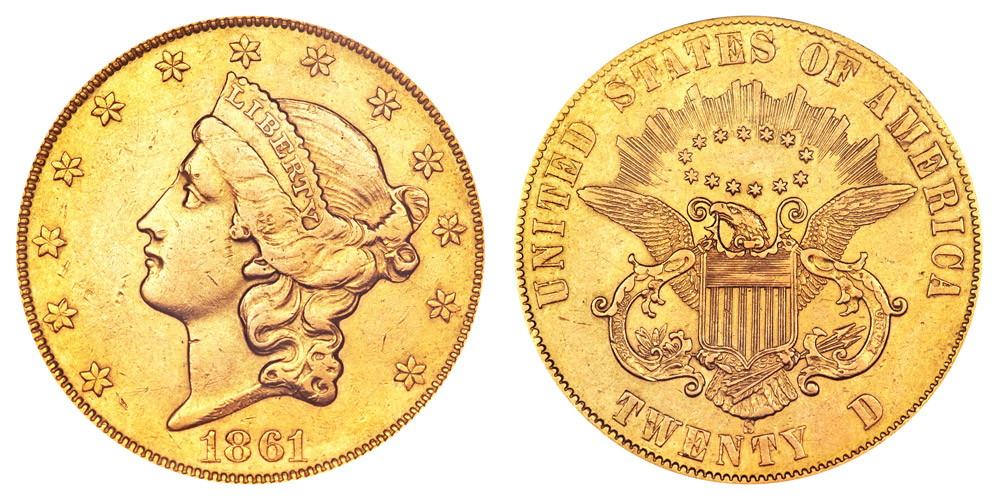
1861-S Paquet reverse Liberty Head gold double eagle
In 1860, Assistant Engraver of the Mint Anthony C. Paquet designed a new reverse for the $20 gold double eagle. A new typeface for the lettering was intended to extend die life, but Mint officials decided after the fact that the rims on the new design were too narrow, inhibiting the stacking of the coins.
The Philadelphia Mint halted production of the 1861 Paquet reverse double eagles in January, melting down all but a couple of pieces. Notice was sent to the branch mints in New Orleans and San Francisco to use reverse dies left over from 1860 until new ones of the original design could be sent.
Word didn’t reach San Francisco until February 2nd. By then, 19,250 Paquet reverse double eagles had been struck and released into circulation (with no apparent problems.) The public at large did not even notice the changed back side of the few 1861-S Paquet double eagles that made it into circulation. No one at the San Francisco Mint had thought the change important enough to save samples.
Another 748,750 double eagles were struck in San Francisco in 1861, further masking the release of the Paquet reverse coins. It wasn’t until 1937 that the coin was recognized as a variety of the Liberty Head double eagle. By this time, they had all been circulating for decades, with many survivors hidden in European bank vaults as part of currency reserves.
The finest known 1861-S Paquet Reverse double eagle is a single coin graded AU58+. CDN Greysheet prices the 1861-S Paquet reverse double eagle at $36,000 in VF20 up to $216,000 in AU58.
18. 1907 High Relief Wire Rim Saint-Gaudens Double Eagle
Auction Record: $660,000
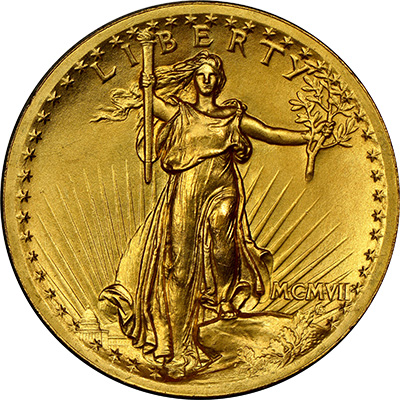
1907 High Relief Saint-Gaudens double eagle obverse
The 1907 High Relief Wire Rim double eagle is one of the most sought-after rare coins in American history. It was the first Saint-Gaudens double eagle to be released to the public.
Unlike the handful of Ultra High Relief examples, which start at $1 million, the nicest 1907 High Relief Wire Rim is valued in the high six figures.
The 1907 High Relief Saint-Gaudens double eagle wasn’t deliberately made with a wire rim. The excessive pressure needed to force the gold in the coin blank to completely fill the die pressed the collar die out just enough for a narrow fin of gold to form along the rim, between the collar and the obverse and reverse dies.
11,250 Wire Rim High Relief double eagles were struck, and nearly all of them were saved before they could circulate, at least at first. PCGS has graded nearly 100 of them at XF40 or below. The finest graded by PCGS is a single coin at an astounding MS69.
CDN Greysheet quotes the 1907 High Relief Wire Rim Saint-Gaudens double eagle from $7,600 for VF20 to $285,000 for MS68.
19. 1792 Half Dime
Auction Record: $1,145,625
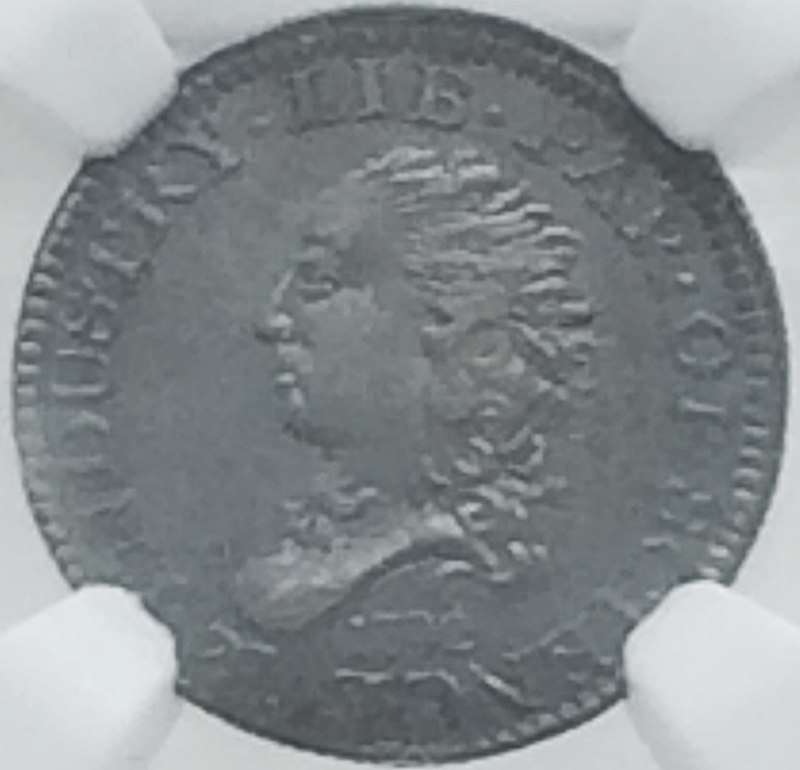
1792 half disme. Image: Wikipedia
Just as the New England Shilling was the first coin minted in North America, the 1792 half dime is equally important as the first coin minted by the United States. Legend has it that President George Washington offered up his sterling silver dining set for the silver to mint the 1792 half dime.
What we do know is that the silver was hand-delivered to the Mint on July 11, 1792 by Thomas Jefferson as Secretary of State. Two days later he logged the receipt of “1,500 half dismes of the new coinage.”
Technically, these coins pre-date the Mint. The Mint building was still under construction and wouldn’t be ready until December. The government leased the basement of Philadelphia toolmaker John Harper for use as a temporary Mint location in the meantime.
The strange spelling of disme was actually pronounced “deem” at the time. Sometimes you’ll still here it referred to as a “diz-mee.” The coin carried a face value of five cents (i.e. half of a dime).
The 1792 half dime was a single-year mintage, being replaced by the 1794 Flowing Hair half dime two years later. There are around 300 surviving 1792 half dimes, including a singular spectacular MS68 example. It was once owned by the first Director of the Mint David Rittenhouse that sold for $1,985,000 in 2018.
CDN Greysheet lists the 1792 Half Disme from $48,000 in Good G4 to $720,000 in Mint State MS66.
20. 1652 New England Shilling
Auction Record: $440,625
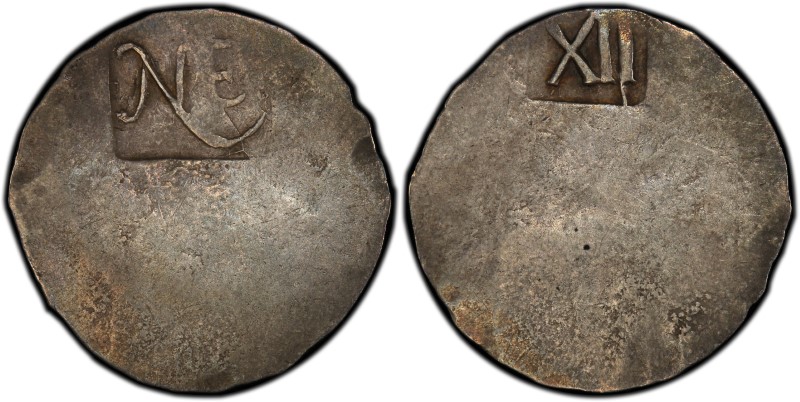
1652 New England shilling. Image: PCGS
This is perhaps the most numismatically important American coin. The 1652 New England Shilling was the first government coin minted in the original thirteen colonies that would become the United States.
The lack of hard currency in the Massachusetts Bay Colony in 1652 led the government to commission John Hull and Robert Sanderson (who happened to be the only two silversmiths in North America) to strike silver shillings, sixpence, and threepence to support the local economy.
Made in a roughly circular shape, the New England Shilling had a stylized NE stamped near the edge on one side, and the Roman numeral XII stamped at the opposite end on the other side. The irregular shape made clipping the coins a trivial matter. They were discontinued after a few months in favor of the more traditional-looking Willow Tree shillings in 1653.
There are an estimated 40 New England Shillings surviving. CDN Greysheet prices the 1652 New England Shilling from $120,000 in Fine F15 to $360,000 in About Uncirculated AU58.
Table Checklist: Top 20 Rare Coins Wanted By Collectors
| Coin Type | Auction Record (U.S. dollars) |
|---|---|
| 1909-S VDB Lincoln cent | $117,500 (Red) |
| 1943 Copper cent | $372,000 |
| 1937-D 3-Legged Buffalo nickel | $99,875 |
| 1893-S Morgan dollar | $2,086,875 |
| 1895 Morgan dollar (proof) | $150,000 |
| 1921 High Relief Peace dollar | $132,000 |
| 1916 Type I Standing Liberty quarter | $48,300 |
| 1919-D Walking Liberty half dollar | $270,250 |
| 1856 Flying Eagle cent | $172,500 |
| 1916-D Mercury dime | $207,000 (Full Bands) |
| 1901-S Barber quarter | $550,000 |
| 1871-CC Seated Liberty dime | $270,250 |
| 1871-CC Seated Liberty quarter | $352,500 |
| 1838-O Capped Bust half dollar | $763,750 |
| 1848 CAL Liberty Head quarter eagle | $402,500 |
| 1933 Indian Head gold eagle | $881,250 |
| 1861-S Paquet Reverse Liberty Head double eagle | $223,250 |
| 1907 High Relief Wire Rim Saint-Gaudens double eagle | $660,000 |
| 1792 half disme | $1,145,625 |
| 1652 New England shilling | $440,625 |


